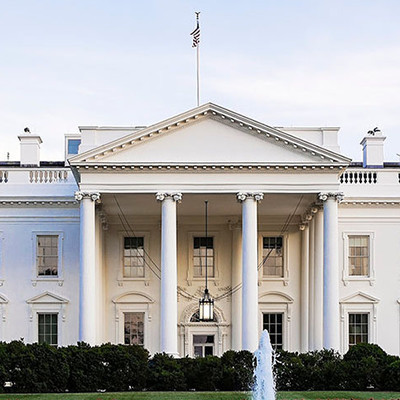June 30, 2017
June 2017 at Policy Integrity:
- EPA Effluent Rule
- Op-Ed on the Cost of Deregulation
- New Research on Climate Impacts
- Public Comments on Regulatory Review and Economics
- Will Energy Storage Reduce Emissions?
- One‐In, Two‐Out Executive Order
-

Challenging EPA’s Effluent Rule Suspension
EPA has suspended the compliance deadlines in a regulation on power plant wastewater discharges, which limits plants from releasing certain toxic metals into lakes and rivers. We submitted a “friend of the court” brief in the legal challenge to the suspension. Our brief argues that the decision to suspend the rule was arbitrary and capricious because EPA focused only on compliance costs and ignored the effects of pollution that will continue to be discharged while the rule is suspended. We explain in the brief that it is fundamentally irrational to make a decision based on such a one-sided analysis, and that the suspension should be vacated.
-

In the News: Trump Follows Through on Deregulation, but at What Cost?
Recent deregulatory actions have been justified on the grounds that they will save costs for regulated industries, but these actions also impose costs on society. In a recent op-ed, Bethany Davis Noll and Jayni Hein cite examples of how federal agencies are ignoring these costs to society, in violation of standard regulatory practices. For example, in a recent suspension of a rule limiting methane leaks during extraction, EPA listed the avoided compliance costs but not the lost societal benefits from suspending the rule, despite having the data to do so. Similarly, the agency omitted the costs of deregulation when suspending rules to prevent chemical accidents at manufacturing plants and limit wastewater discharges from power plants. The piece argues that agencies “should transparently disclose and address the costs of the policy changes they make,” and that the Office of Information and Regulatory Affairs should enforce this requirement.
-

New Research on Climate Impacts
In newly published research, Peter Howard and Thomas Sterner correct flaws in past meta-analyses of global climate damage estimates and calculate updated estimates. Their study in Environmental & Resource Economics found that past study methods flattened the relationship between temperature increases and climate damages, partly because of the limited data on climate damages available at the time. Using new methods in their meta-analysis, Howard and Sterner found that estimated damage caused by climate change, calculated in GDP, was three to four times higher than the most commonly accepted estimates. When considering catastrophic impacts of climate change, that damage was four to five times higher than current estimates.
-

New Public Comments: Regulatory Review, California Energy, Forest Service EIS
Our recent comments respond to federal and state use of economic analysis. Many federal agencies are requesting the public’s suggestions for rules to repeal or reform, tacitly implying that most regulations stifle economic growth. In comments to several agencies, we argue that regulatory review should consider the public benefits of regulation, not just the costs to regulated industries, and should prioritize review of rules for which actual costs and benefits diverge significantly from predicted costs and benefits. The agencies for which we filed comments include the Department of Housing and Urban Development, the Motor Carrier Safety Advisory Committee, the Federal Maritime Commission, the National Oceanic and Atmospheric Administration, and the Coast Guard. We also recently submitted comments to California’s Public Utilities Commission, focused on the economic analysis used in its energy planning process. And in comments to the Forest Service, we cite the legal and economic reasons why it must consider climate impacts in a recent Environmental Impact Statement.
-

Will Energy Storage Reduce Emissions?
The rapid decline in manufacturing costs of energy storage, and the assumption that it can reduce greenhouse gas emissions by making renewable energy resources more attractive, put energy storage systems at the center of climate and energy policy discussions. In a forthcoming article in the Harvard Environmental Law Review, Richard Revesz and Burcin Unel challenge this common assumption by exploring situations in which energy storage systems can cause an increase in greenhouse gas emissions. They show that the current regulatory and policy landscape falls short of providing sufficient incentives for a desirable level of deployment of energy storage or sufficient safeguards to ensure that more energy storage deployment is indeed beneficial. They suggest reforms to correct these inefficiencies, and discuss the jurisdictional roles between state and federal regulators in implementing these reforms.
-
The One‐In, Two‐Out Executive Order Is a Zero
President Trump’s Executive Order 13,771 directs each federal agency to repeal at least two existing regulations before issuing a new one and imposes a regulatory budget that sets a cap on total incremental regulatory costs. In a new essay, Caroline Cecot and Michael Livermore evaluate the Order against three priorities that have been adopted by prior administrations or promoted by scholars, commentators, or interest groups: (1) increasing net benefits of regulation, (2) decreasing regulatory burdens, and (3) increasing presidential control over agencies. They conclude that the Order is unlikely to achieve any of these goals without significant changes. They urge President Trump to scrap the Order and instead ensure that agencies engage in reasonable retrospective review of existing regulations and that the Office of Information and Regulatory Affairs has sufficient staff to oversee agency decisionmaking.

